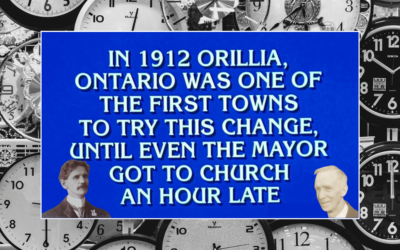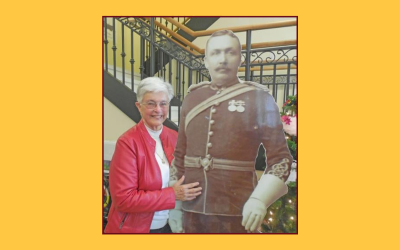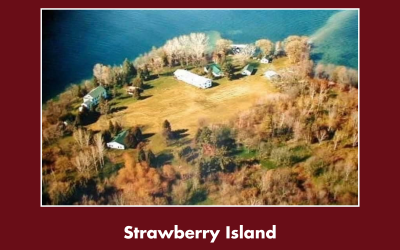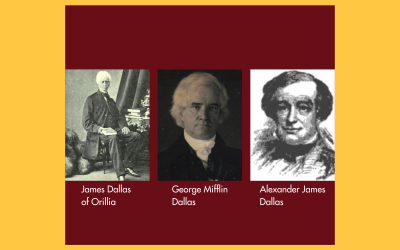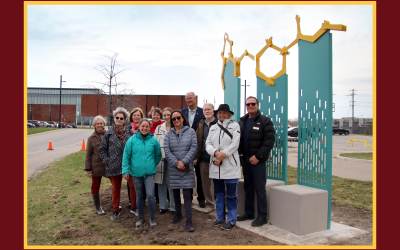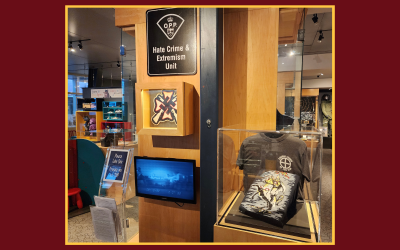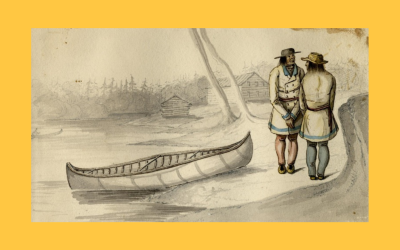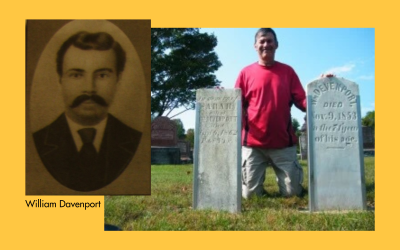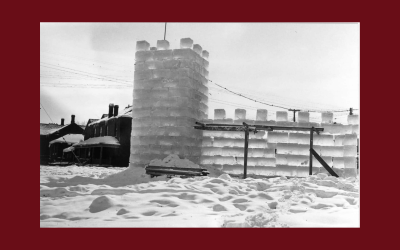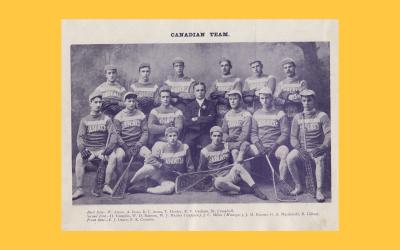THE TAITS OF ORILLIA
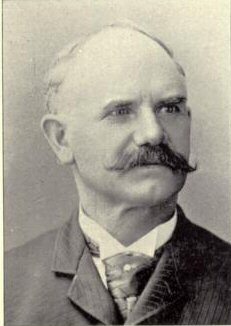
Andrew Tait, 1896. Photo from the Orillia Museum of Art & History Archives
By William Leslie, Guest Contributor
This is the story of the Tait family. William Tait, his wife, Mary and family left Scotland in 1848 for Canada, travelling from Liverpool to New York City, up the Hudson River and the Erie Canal. They finally crossed from Buffalo to Fort Erie, Upper Canada in 1860. Andrew Tait was 21 years old.
The Taits started a lumber business, in Fort Erie and Ridgeway. In 1863, Andrew Tait married Aurilla Howse, whose Loyalist family had a 200-acre land grant on the Niagara River. Andrew and Aurilla had three children, Albertha, Orland, and Alma Jane.
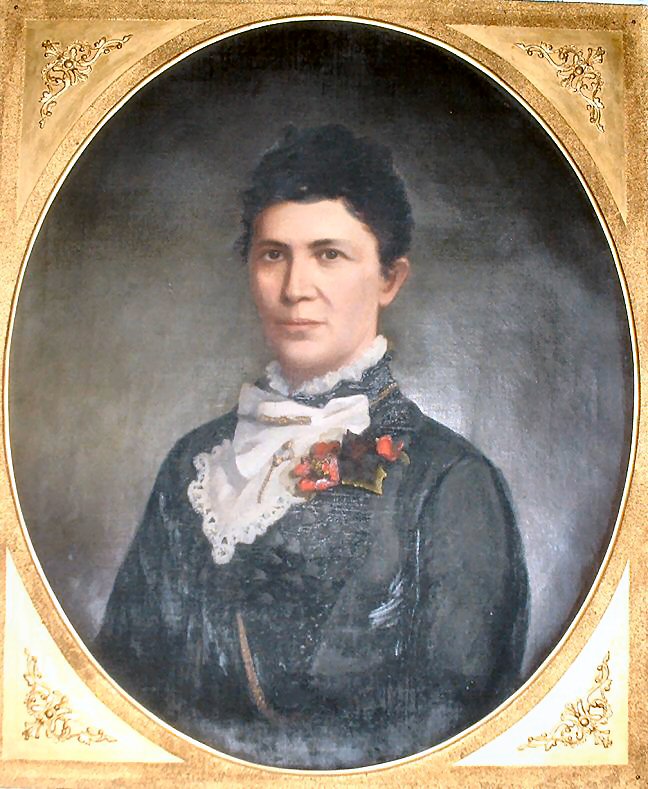
Portrait of Aurilla Tait. Photo from the Orillia Museum of Art & History Archives
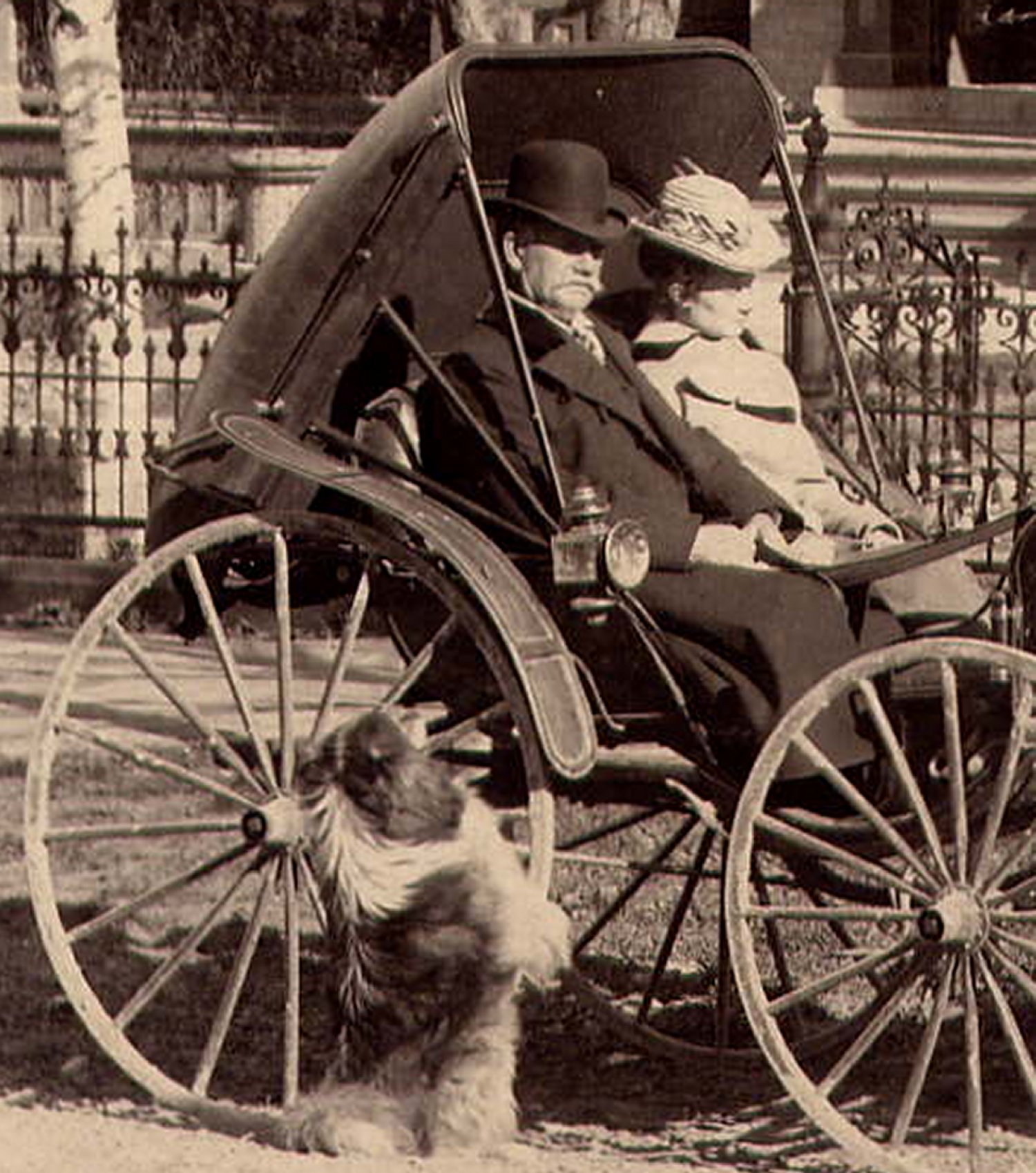
Andrew and Aurilla Tait at Glenorma Colborne Street, 1885. Photo from the Orillia Museum of Art & History Archives
In the year of Confederation, 1867, when Orillia was incorporated as a town, Andrew, Aurilla and their three children made Orillia their home. In 1871, two of their children died in the Orillia Diphtheria Epidemic. Their four other children were born in Orillia.
Andrew and Aurilla started with a hand-cranked shingle making machine in a shop on Andrew Street. Andrew cranked the machine and Aurilla tied the finished shingle bundles. They believed that this new town of Orillia was the place to make their way in the new country of Canada. Andrew was a pioneering and resourceful entrepreneur who built businesses, built houses and created hundreds of jobs in lumbering, quarrying, and building.
In 1934, at age 95, Tait was still building, buying, and selling and one way or another giving employment to a small army of men. He bought the land on Couchiching Point and Cedar Island and developed lots for holiday homes.
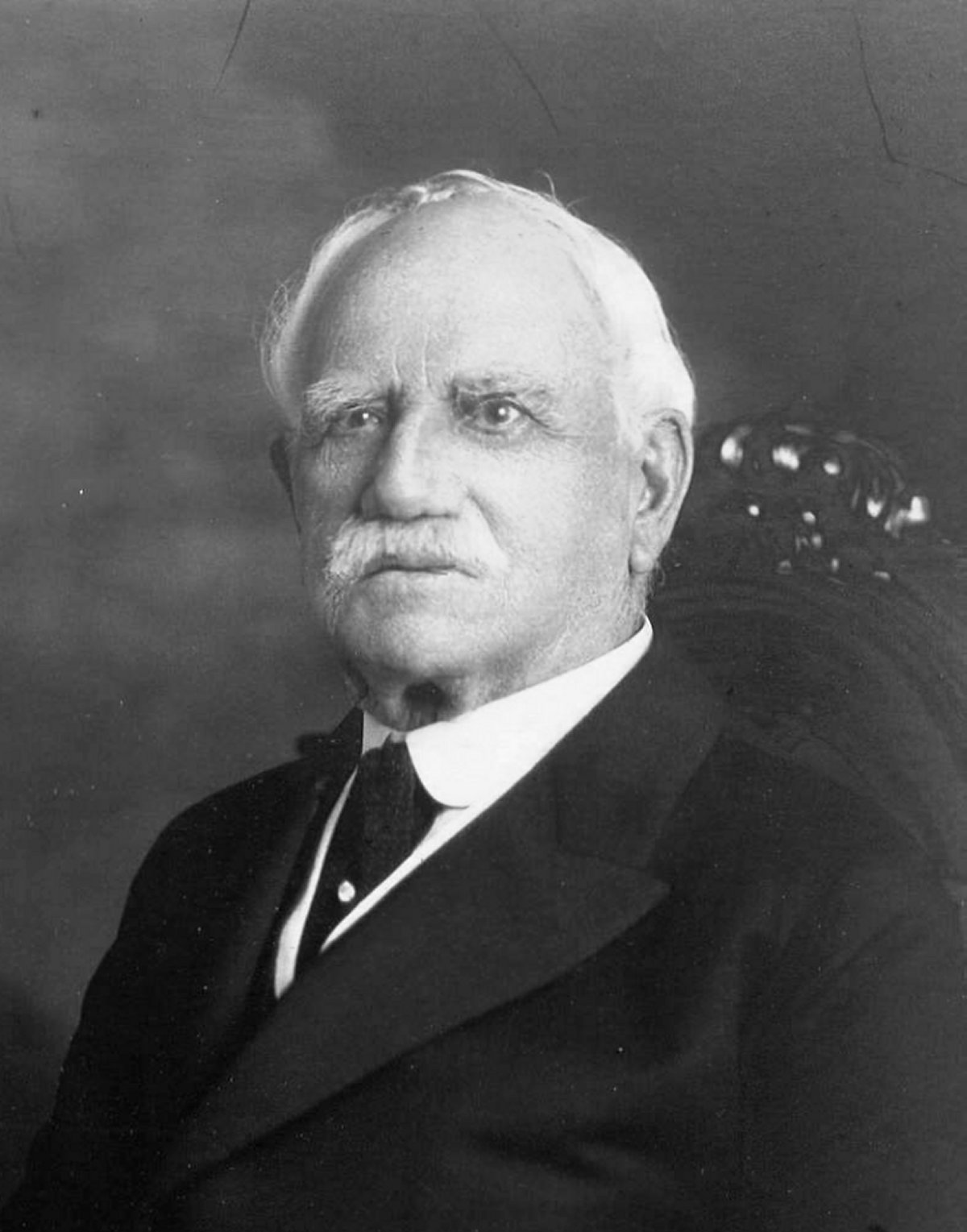
Andrew Tait on his 91st birthday, June 26, 1930. Photo from the Orillia Museum of Art & History Archives
The Orillia churches provided outlets for citizens to pursue their faiths, meet people, enjoy artistic presentations, fundraise for national and other causes, and assist one another. The Methodist Church presented plays to raise funds for soldiers in the South African War. Tait daughters, Alma and Clarisse, were musical and artistic and actively participated in these presentations.
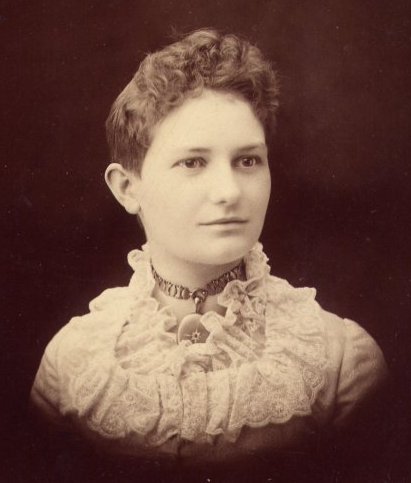
Alma (Tait) Wainwright, 1885. Photo from the Orillia Museum of Art & History Archives
In 1870, Andrew Tait was a major donor of funds to build the new St. Paul’s United Methodist Church. Alma Jane became the organist and a member of the choir and met Edward Wainwright the choirmaster. They were married in 1892.
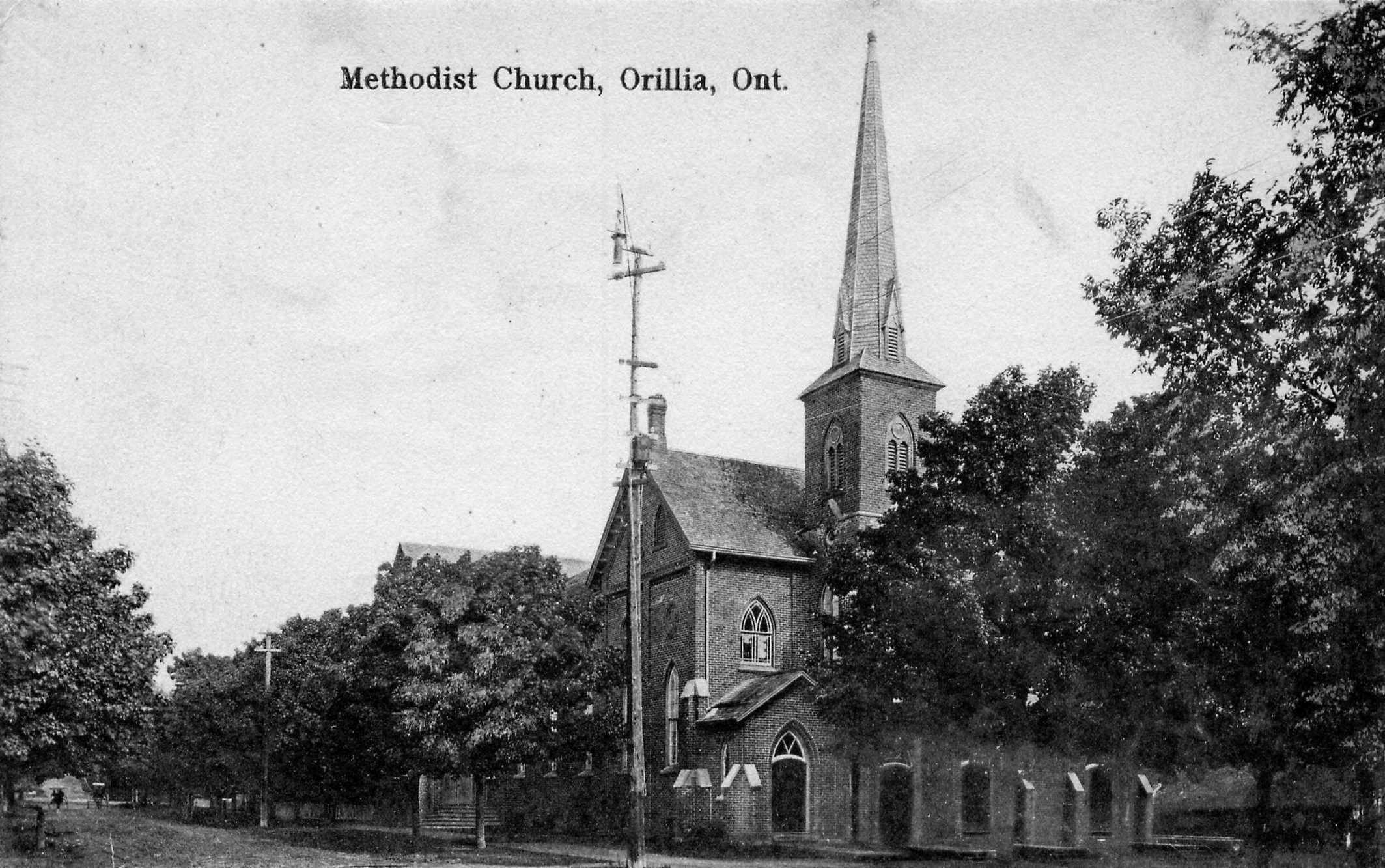
St. Paul’s United Methodist Church. Photo supplied by Marcel Rousseau
Clarisse married Sidney Carss, whose family had a store on Mississaga Street. Sidney joined the Tait Lumber Company and took it over when Andrew Tait moved to the Huntsville Lumber Company.
During the lumber boom in Orillia, the 29 bars gave the town a reputation as a “log and grog” town. It was a brawling rowdy place. Tait and other Methodists were active in the temperance movement and The Canada Temperance Act of 1878 resulted in the closing of all the bars.
In 1885, in his mansion Glenorma, Andrew Tait built a roller-skating rink on the top floor for his daughters to entertain their friends so that they would not go to dances in town.
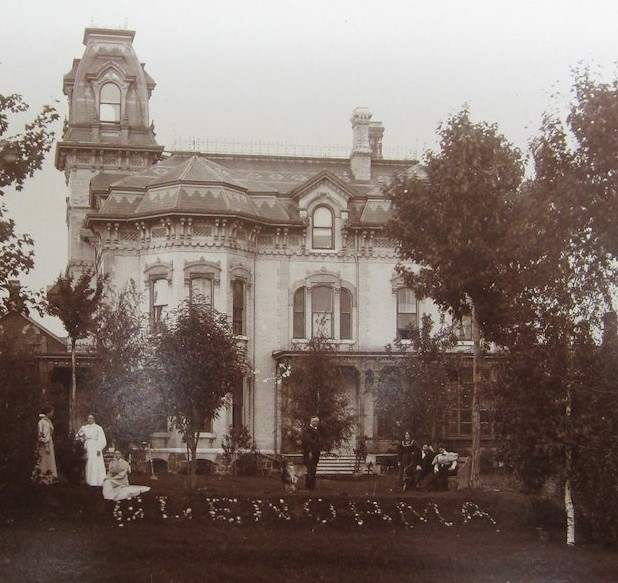
Glenorma. Photo from the Orillia Museum of Art & History Archives
About 1886, he bought a 75-foot steam yacht, Gypsy, and built a boat house where he and some friends formed the Orillia Yacht and Canoe Club. This Club provided opportunities for healthy competition and socializing. In 1900, Alberta, an expert canoeist, won a gold medal in Ladies Canoeing.
The Taits were pioneers who had a tremendous impact on the early foundations of Orillia and in many ways their legacy lives on today. In 1992, one of the Tait millworker’s houses that was built in 1889, located at 52 Scott Street, was registered as a designated property under the Ontario Heritage Act. The two-storey, red brick house was the only remaining example of a millworker’s house in its original condition on Scott Street.
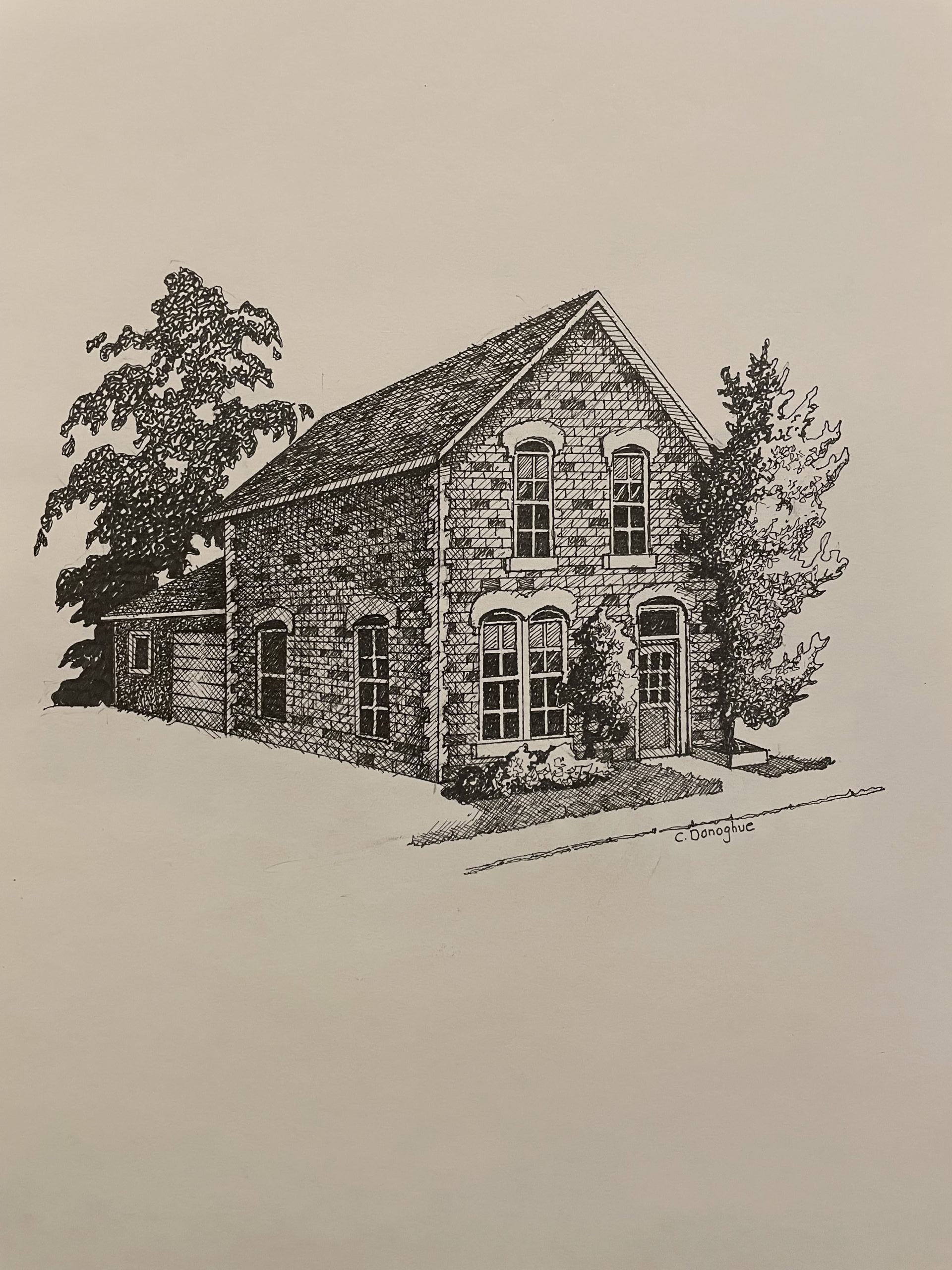
Sketch of 52 Scott Street. Artist Clayton Donoghue
We want to thank contributor William Leslie for his work researching and documenting our local history for future generations, including this story about the Taits. OMAH is proud to have a number of Tait artifacts in the collection and share them with you at this time.
These artifacts can be viewed at the OMAH exhibit GREAT TAIT: The True Story of Orillia’s First Millionaire. Please join us and don’t miss it!
Mayor William Sword Frost
By History Committee members Bruce McRae and Mary Ann Grant Recently, our own City of Orillia was featured on the popular game show Jeopardy. What could we have done to garner such attention?CLUE: IN 1912 ORILLIA, ONTARIO WAS ONE OF THE FIRST TOWNS TO TRY THIS CHANGE....
A Tribute to Jean Sarjeant
by Mary Ann Grant, OMAH History CommitteeCredit - Special to the Orillia Packet and Times - Kate Grigg Jan 12, 2017 “Dad's Diary includes tales worth telling"The Orillia Museum of Art & History (OMAH) believes that it is important to acknowledge its supporters,...
The History of Strawberry Island, Lake Simcoe
By Fred Kallin, OMAH History Committee memberAnatari, Pa-Push-Quan, Gwillam’s Island, Lundy’s Island, Creighton Island, Anderson Island, Starvation Island: these are all previous names for a small 25-acre island in Lake Simcoe we now know as Strawberry Island. Few...
The Barons of Dallas
By Fred Blair, OMAH History Committee member and Family Historian In 1835, James Dallas and his family sailed from Scotland to New York City, travelled up the Erie Canal, and made their way to Orillia. In September he purchased 100 acres between Mississaga Street and...
City unveils its newest art commission: Crossroads, Connections and Intersections
The City’s Art in Public Places Committee along with Mayor Don McIsaac unveiled the sculpture “Endorphin” by artist Camille Rajotte on April 20, 2023. The sculpture is one of nine works being installed across the city over the next several months as part of the...
A Murder Plot and the Canadian Knights of the Ku Klux Klan
Currently on display at the OPP Museum, these items were seized by OPP members during investigations. The grey Canadian Knights of the Ku Klux Klan (KKK) t-shirt was seized as part of the 1982 investigation into forged passports that turned into a killer for hire....
CHIEF YELLOWHEAD’S JUSTICE IN 1832
Indians and Canoe at Coldwater River, 1844, Titus Hibbert Ware (Toronto Public Library)By Fred Blair, OMAH History Committee member and Family Historian This is a story of an accidental killing in 1832, an unsatisfactory trial verdict, and how Chief William Yellowhead...
THE DAVENPORT BROTHERS
By Fred Blair, OMAH History Committee member and Family Historian About 1810, 20-year-old Benjamin Davenport, his younger brother William, and William’s wife Sarah arrived in Upper Canada (Ontario) as former Black slaves. William was born in Virginia about 1792 and...
THE ORILLIA WINTER CARNIVAL – A HISTORY
By P. (Trish) Crowe-Grande, Chair: OMAH History CommitteeWinter weather can bring short, bone-chilling days and long, dark nights with the sun setting much too early. For many of us, it can be challenging to find engaging activities that don’t involve bingeing an...
THE CANADA-AUSTRALIA SERIES
By David TownIt was another proud first for Orillia, and an astounding accomplishment – but as John Miller stepped off the train at the Orillia platform the only people there to greet him were his family. He had single-handedly negotiated, organized, and managed the...

